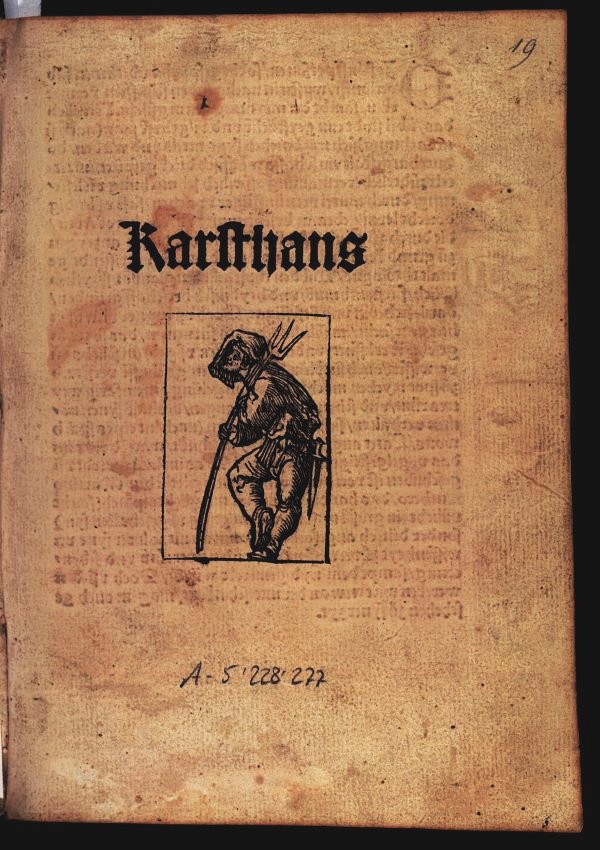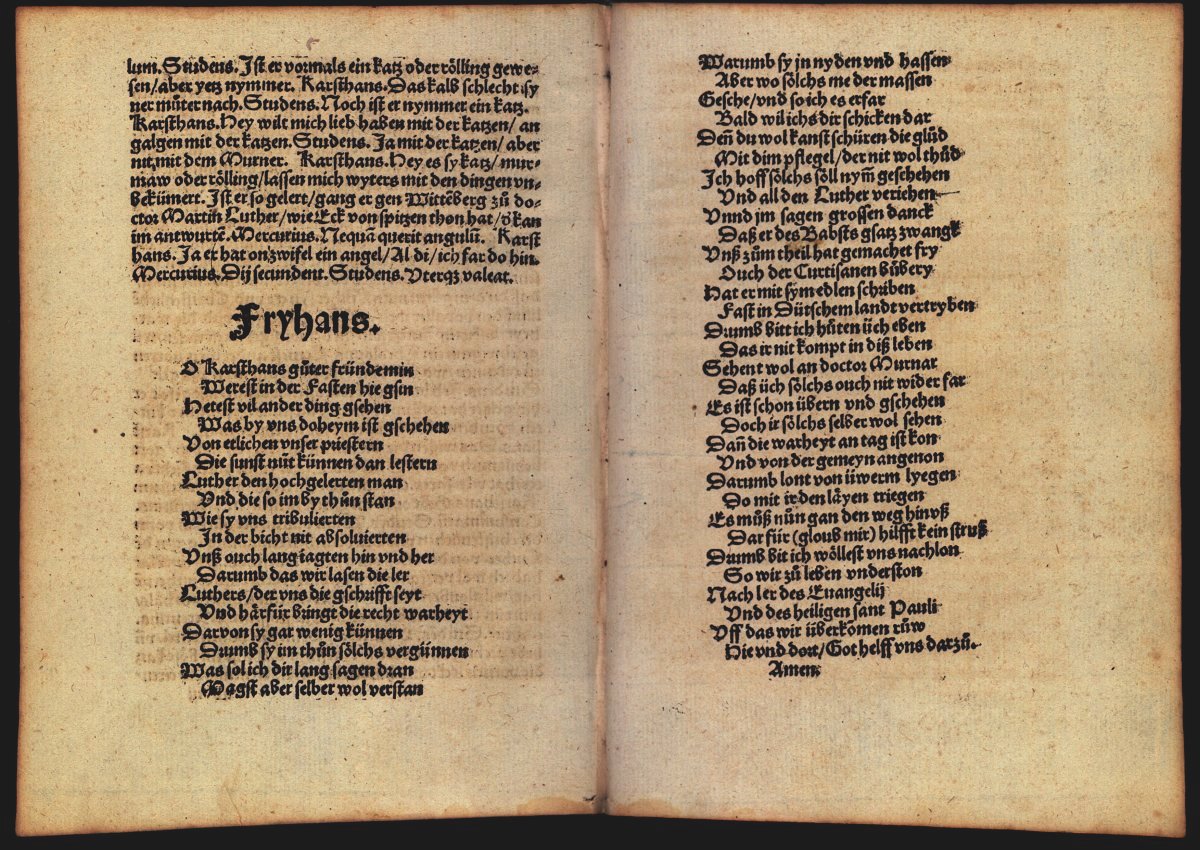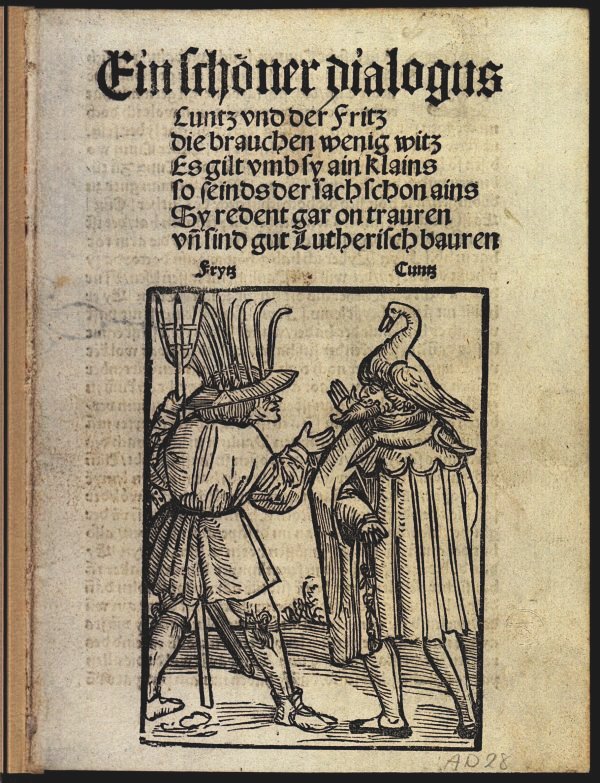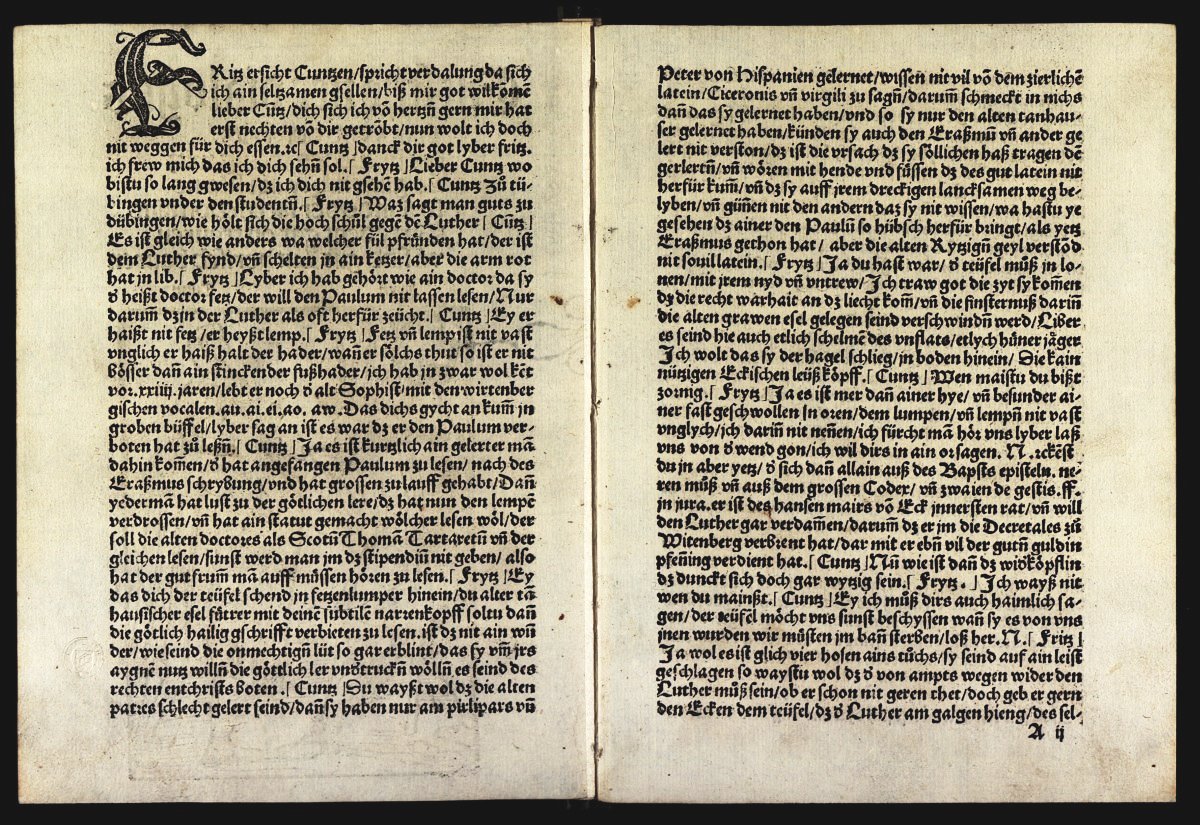Dialogues of Reformation
For the formation of opinions explanatory pamphlets in the form of dialogues were very popular during the Reformation process. Participants of the disputations were members of the lower population strata, mostly peasants. Debating with each other but also with church representatives, they showed themselves enlightened and represented the beliefs of the new confession. Striking front pages with illustrations of the interlocutors demonstrated their self-confidence and made the flyers attractive.
The pamphlet "Karsthans", an eloquent peasant who explains Luther's "Priesthood of all believers" (German: Priestertum aller Gläubigen) through biblical argumentations and finally became "Fryhans", was published for the first time in 1521 in Strasbourg. Through numerous reprints as this one in Basel (MUE AD 40:19) "Karsthans" became a cult figure.
In their "beautiful dialogue" (German: Ein schöner Dialogus) the reformer Urbanus Rhegius lets the two peasants Fritz und Kunz appear as self-confident Luther followers who are well-informed about current events.




